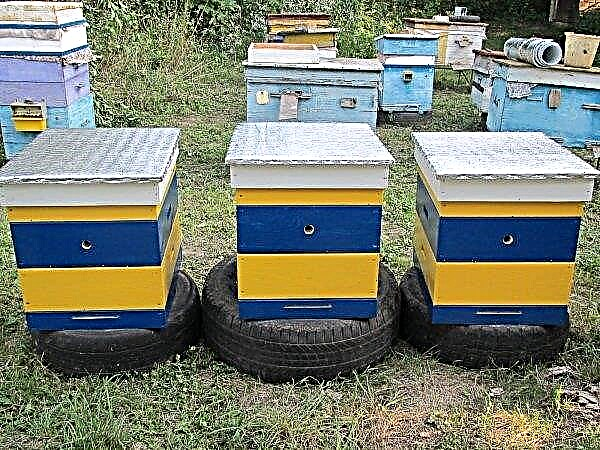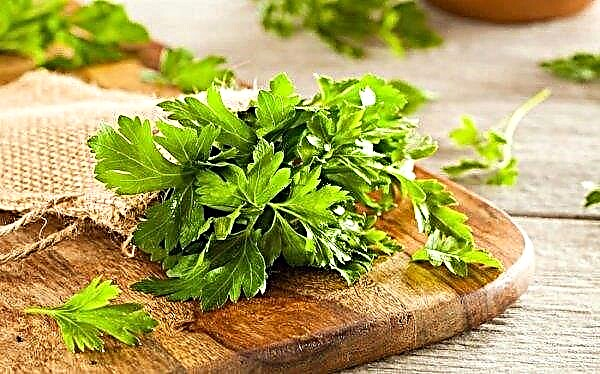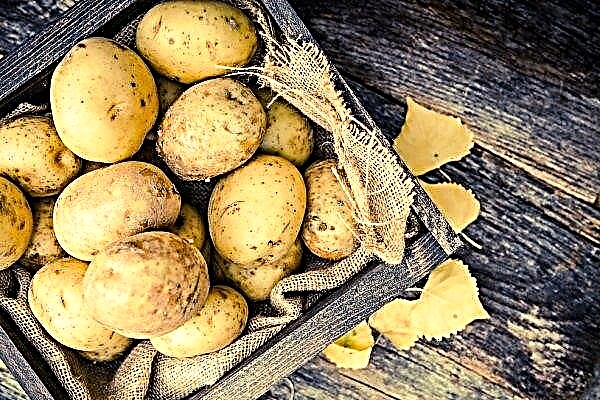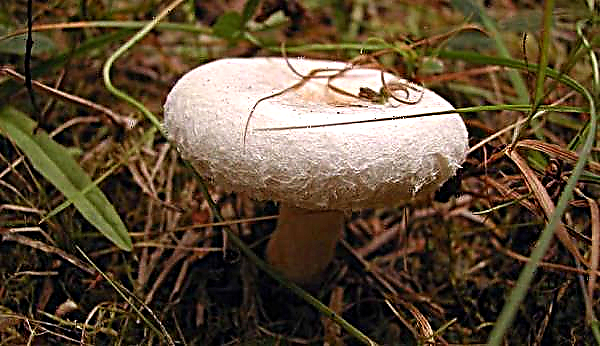Bright gladiolus (or fennel) is grown in many flowerbeds all summer, but sometimes the leaves of the flower begin to turn yellow or may become dry for unknown reasons. This phenomenon can be caused by errors in the care of the flower, as well as dangerous diseases of various nature. More details about why the leaves and flowers of gladioli begin to dry out, a description of the signs of the main diseases of the flower garden, as well as ways to help the plant, are further in the article.
Why leaves / whiten leaves of gladioli
In order for the gladiolus to please with an attractive appearance and lush flowering, it is necessary to create the necessary conditions for growth for it. But sometimes the leaves of the flower begin to dry or may turn white, as a result of which the plant withers.
Did you know? The gladiolus flower got its name from the Latin word "gladius", which meant a short Roman sword.
The main reasons why gladiolus leaves can turn white or dry out are listed below:

- fungal or bacterial infections - leads to the fact that the whole plant begins to wither and dies;
- improper care - if the recommendations on agricultural technology are violated, the flower lacks moisture, nutrients or oxygen, which leads to its drying;
- pest infestation - they can damage the roots, leaves and inflorescences of the plant, causing it to wither;
- unsuitable landing place - the gladiolus should receive a sufficient amount of sunlight and heat, and also not suffer from stagnation of water and too heavy soil.
Why turn yellow before flowering
Affected gladioli can begin to turn yellow even before flowering begins. But in addition to fungal and bacterial infections, the drying of a plant before the flowers bloom on it can also be caused by improper care.
Important! In cool and cloudy weather, watering flowers is reduced to 1 time per week. Overmoistening of the soil in combination with low air temperature can lead to fungal diseases.
Gladiolus may turn yellow before flowering for the following reasons:
- improper watering - the plant needs to be irrigated several times a week, spending 10 liters per 1 m² of area and preventing water drops from falling on the leaves to avoid sunburn;
- lack of weeding - weeds absorb a lot of nutrients from the soil, and the gladiolus lacks the necessary components and can dry even before the buds appear;
- lack of nitrogen in the soil - it is recommended to feed the flower with nitrogen fertilizer 2 times with a break of 10-14 days, starting from the phase of the first pair of leaves.

What causes the buds to dry without blooming
Sometimes the gladiolus turns yellow and can dry out during the budding phase. At the same time, the inflorescences fade and crumble even before they begin to blossom.
Did you know? In the Middle Ages, the bulbs of gladioli were ground into flour, and then added to the dough for baking bread.
There may be several reasons for this phenomenon:
- poor quality planting material - if weak, small, damaged seed bulbs were used or they were infected with diseases and pests, then the buds will dry out;
- lack of sunlight - the plant will not be able to bloom in the shade;
- crop failure - flowers need to be replanted to a new site every 3-4 years, otherwise flowering will be very poor;
- adverse weather conditions - in the summer in extreme heat, the buds and ends of the leaves may dry out due to lack of moisture;
- planting old and young bulbs nearby - planting material of different ages consumes an unequal amount of nutrients from the soil, so older tubers will inhibit young specimens;
- lack of potassium and phosphorus in the soil - at the beginning of the budding phase per 1 m² of area, 10-15 g of potassium sulfate and 30 g of superphosphate must be added;
- lack of air access to the roots of the plant - in order to eliminate the dense earth crust on the soil surface, after each irrigation it is necessary to carry out surface loosening.

Why do the arrows dry at gladioli
It happens that the gladiolus bulbs are absolutely healthy and the plants do not suffer from a lack of nutrients, but the arrows of the flowers began to dry out. This is a sign that the root system of the plant cannot provide full stem growth.
The main reasons for the drying of arrows of gladioli are:
- insufficient watering - the peduncle for normal growth needs a lot of moisture, so if there is a shortage of water in the ground, the arrow can dry out;
- late embedding of planting material in the ground - the plant develops evenly in conditions of moderately warm weather, and with late planting of bulbs under the influence of hot and dry weather, the ground part of the flower grows faster than its roots;
- high air temperature - under the influence of hot sunlight, the peduncle fades and fades.
Causes of Drying of Gladiolus Flowers
Sometimes it is not the leaf that becomes yellowish, but the gladiolus flowers. This phenomenon can be caused by hot weather and insufficient watering, but if the flowers continue to dry, despite observing all the requirements of agricultural technology, then the most common cause are thrips.
 The body of thrips has a length of not more than 1.5 mm, so on the leaves of plants these insects look like small black dots
The body of thrips has a length of not more than 1.5 mm, so on the leaves of plants these insects look like small black dots
The life features of this pest are listed below:
- insects winter under the scales of the bulbs;
- in spring, females begin to lay eggs continuously on the surface of tubers;
- larvae and adult insects feed on the flesh of leaves, leaving black dots on them;
- thrips gnaw holes in non-blooming flowers, penetrate inside and drink juice from the inflorescence;
- as a result of the pest attack, the flowers become ugly, deform and dry out.
Important! To prevent thrips from wintering on the bulbs, before storing the tubers for storage, they are folded into a sealed bag and sprayed with dichlorvos.
If thrips is found, you need to cut off all the affected parts of the plant, and then treat the gladioli with “Fitoverm” or “Karbofos”. Between sprayings take a break of about 20 days.

Diseases of gladioli and measures to combat them
If the gardener properly cares for gladioli, but the leaves of the plants are still yellow, then various diseases can be the cause of the problem. Their causative agents are fungi, bacteria or viruses. In some cases, it is impossible to save the affected flower.
Did you know? In ancient Rome, gladiators wore a gladiolus bulb on their chest, considering it a symbol of victory.
The main infections that most often affect gladioli:
- Fusarium (dry rot). The disease has a fungal nature, and the pathogen lives in the soil. The causes of infection are: increased humidity, excess water and nitrogen fertilizers in the soil, as well as thickened plantings. Signs of infection include yellowing leaves and buds of the plant, as well as blackening of the bulb and the appearance of brown spots on its surface. It is impossible to cure a diseased specimen, therefore it is dug up and burned, treating the planting site with a solution of copper sulfate (100 g of substance will be needed for 10 liters of water).
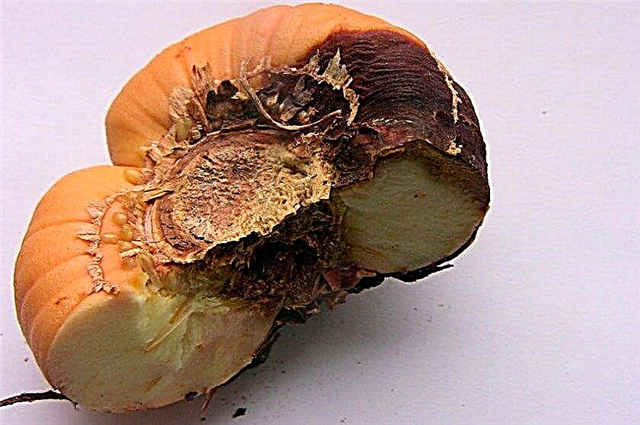
- Sclerotiniosis (black rot). The causative agent of this disease is a fungus that lives in the ground. The infection manifests itself in the cultivation of gladioli on waterlogged soil with high acidity, as well as as a result of the introduction of fresh humus as a top dressing. Symptoms of the disease are dark spots on the surface of the gladiolus and rotting of the bulb, which leads to yellowing of the plant and falling leaves. For treatment, you need to reduce the acidity of the soil, sprinkling it with lime, and spray the flower with Bordeaux liquid.

- Botritiosis (gray rot). The disease spreads with fungal spores that are carried by the wind. The main sign of infection is small brown spots on the leaves and watery formations on the flowers. Then the disease spreads to the stem. At the advanced stage, the plant dries up, and its bulb becomes rotten. The disease is not treatable, so the infected flower is dug up and destroyed, and the place of its growth is sprayed with Bordeaux liquid.
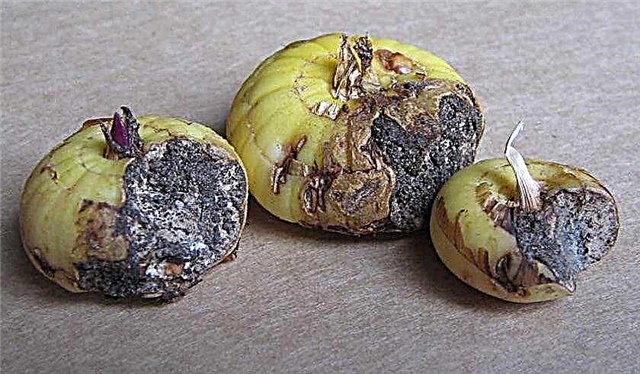
- Septoria (hard rot). Various insects act as carriers of this fungal infection, and the disease most often manifests itself in an acidic environment. The first sign of the disease is brown spots with a black border on the surface of the leaves. Then hardening and blackening of the bulb, as well as the withering of the entire terrestrial part of the flower, are observed. A sick plant is dug up with the root and destroyed, and the soil is sprayed with a Bordeaux mixture.
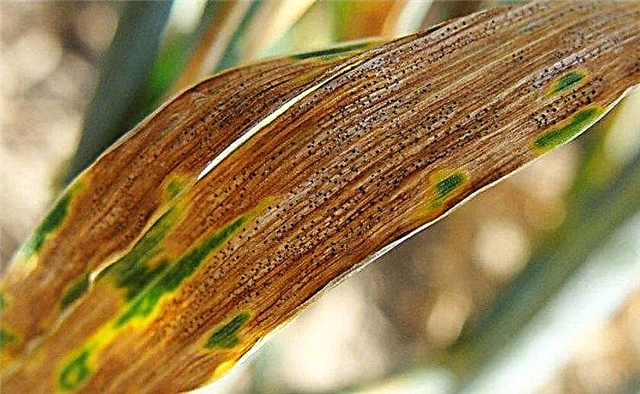
- Mosaic. This disease belongs to viral infections, and insects act as its carriers. As a result of infection, spots form on the leaves and buds of the plant, which cover the entire flower and lead to its death. The leaves of the gladiolus are discolored, and the bulb dries. The mosaic cannot be cured, so the affected gladiolus is dug up and destroyed, and neighboring plants are sprayed with insecticides.
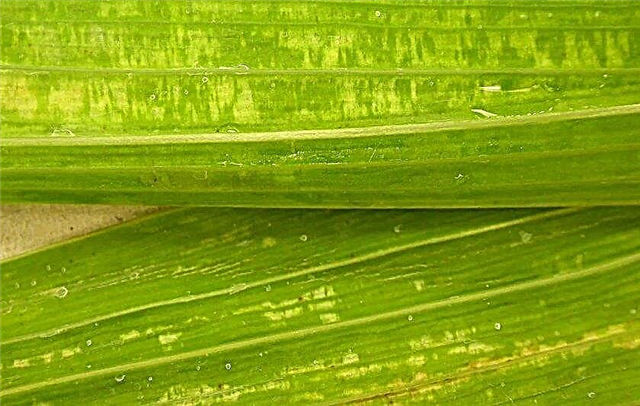
- Bacterial scab. The causative agent of the disease are bacteria living in the ground. Excessive watering and too heavy soil with a high clay content may cause infection. Signs of scab include yellowing and drying of the bases of the leaves of the flower, decay of the buds and neck of the plant. Onions form shiny oval-shaped dark spots. For treatment, you need to remove the ground part of the gladiolus, dig out its bulb and cut out all the affected areas, dusting the sections with a mixture of crushed coal and sulfur.
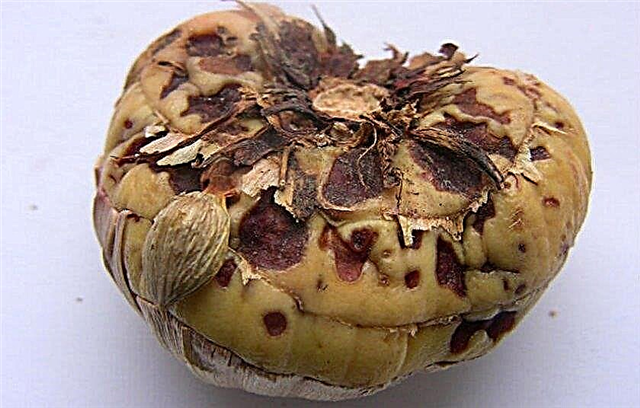
- Bacterial cancer. Its causative agent is bacteria living in the upper layers of the soil. On the bulbs of plants affected by cancer, growths of various shapes and sizes can be seen. The disease is not treatable, therefore, the infected flower is destroyed, and the soil around it is treated with fungicides.

Disease prevention
In most cases, with lesions of gladioli by the listed infections, it is impossible to cure a diseased instance. Therefore, it is worth paying attention to preventive measures that will help prevent the occurrence of these problems.
Disease prevention is carried out with the help of such actions:
- replanting plants on a new flowerbed every 3 years;
- disinfection of bulbs before planting with Fundazol solution;
- the use of high-quality and healthy planting material;
- regular weed removal;
- surface loosening of soil around flowers;
- mulching the soil near the plants of pine needles;
- removal of garbage and plant debris from beds;
- compliance with the irrigation regime;
- fertilizer application according to the feeding schedule;
- deep digging of land on the site before planting the bulbs;
- flower processing with 1% Bordeaux fluid every 2 weeks.
Important! After gladioli, it is recommended to plant marigold or marigolds on the site. They release phytoncides into the soil, which kill the harmful microflora.
The leaves of gladioli can turn yellow for various reasons, so the gardener needs to be able to determine what exactly causes this phenomenon. Using the information presented in the article, you can find and eliminate possible errors in care that could lead to the drying of plants, as well as notice the onset of the disease in time and do everything possible to save dried flowers.








